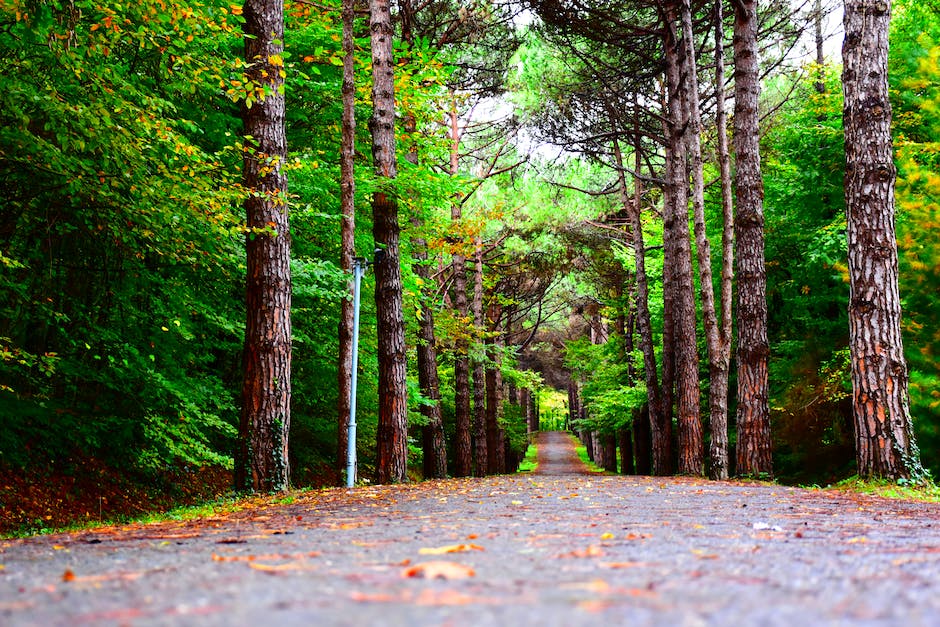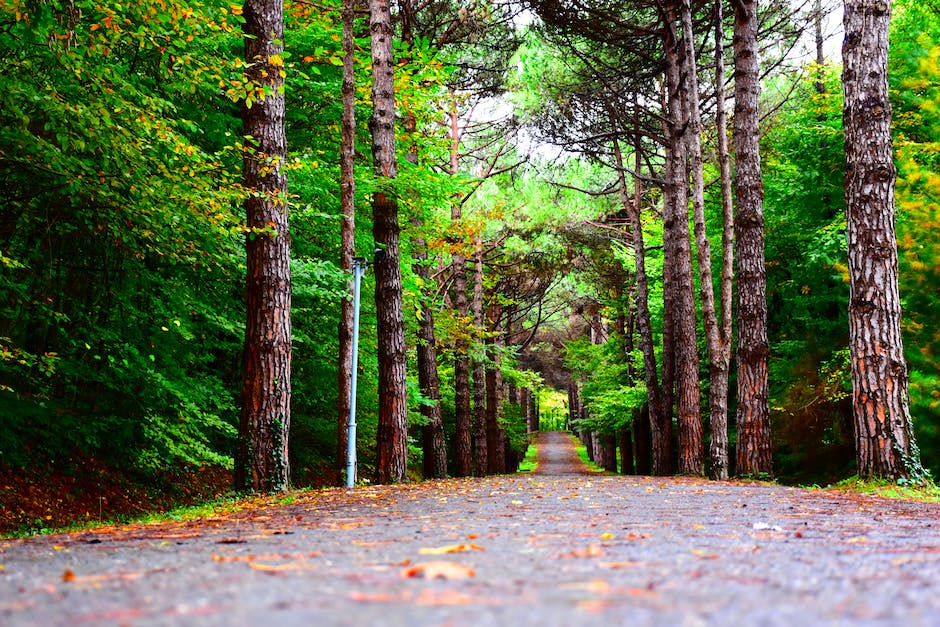A dying maple tree can be saved if the correct steps are taken. The tree must be properly diagnosed to determine the cause of the problem. Once the problem is identified, the appropriate treatment can be applied. often, a dying tree can be saved with the right care.
$,1. Can A Dying Maple Tree Be Saved
Yes, a dying maple tree can be saved.
How do you fix a dying maple tree?
High soil alkalinity and nutrient deficiencies in the tree can be corrected by adjusting the soil pH and soil enrichment with organic material. The ideal soil pH range for maple trees is between 55 and 73. It can be lowered by using organic mulch, which coincidentally, will provide nutrients to your tree.
If you notice any of these signs in your maple tree, it is likely dying. Take action to save it if possible, as a dying tree can pose a safety hazard.
Why does my maple tree look like it is dying
A maple tree’s energy reserves are depleted when it has to fight off environmental stress and physical injuries. These injuries can leave the tree open to secondary infections, which can cause the tree to decline. Other causes of maple decline include root breakage and soil compaction from heavy equipment, nutritional imbalance, prolonged drought and vandalism.
The range of symptoms for this particular topic includes leaf spots, blighted leaves and young shoots, cankers, and dieback of young twigs and branches. The most common symptoms are large, irregular, dead areas on the leaf that are often V-shaped or delineated by the veins. These areas can be tan and paper-thin. If you are experiencing any of these symptoms, it is important to seek professional help in order to determine the best course of treatment.
How do you revive a Chinese maple tree?
You can save your dying tree in five easy steps. Step One: Leaf Observation Observe the nature of your leaves daily. Step Two: Remove Insects from the leaves and the tree. Step Three: Soil Draining System to improve the drainage of the tree. Step Four: Granulated Fertilizer to provide nutrients to the tree. Step Five: Prune And Cut the tree to improve its growth.
When feeding a maple tree, I use a slow-release shrub and tree fertilizer at rates recommended on the product label. Alternatively, you can feed with mild, organic plant food. Avoid the use of 10-10-10 and other similar quick-release fertilizers.
Do maple trees need a lot of water?
If you want your maple tree to stay healthy, you need to water it around 11 gallons a week. However, young maple trees need even more water, especially in dry, hot conditions. Instead of watering your tree a little every day, it’s better to water it a few gallons every couple of days.
A tree may be dying if you see sticks all over the ground, bark falling off, rot or fungus, the tree is leaning, open wounds, no leaves, termites or other pests, or root damage.
What is the lifespan of a maple tree
Maple trees are a type of tree that can live for a long time. The specific lifespan of a maple tree depends on the type of maple tree it is. Sugar maple trees can live for up to 400 years, while silver maple trees usually only live for around 100 years. Red maple trees have a lifespan somewhere in between, lasting for up to 300 years.
If you notice that your plant’s new growth is wilting or that the leaves are yellow or green, it means that there is too much water present. Be sure to check the leaves carefully as well; even if they appear green and healthy, they may be fragile and break easily if they are getting too much water.
How do you keep a maple tree healthy?
Prune, water, and fertilize maple trees regularly to maintain optimal health. Newly planted maple trees will benefit from a root enhancer like ArborKelp®, SavATree’s exclusive seaweed biostimulant fertilizer. This aids in tree establishment, promotes root growth, and heightens stress tolerance.
Overd watering is a common problem with Japanese maples. If the leaves are turning brown or black at the tips, it is a sign of too much water. The best way to avoid this is to plant the tree in well-drained soil and to water it only when the soil is dry.
Is my maple tree dead or dormant
If you see that your tree does not have any buds, or if the buds are dry and shriveled, this means that the branch is dead. You should cut off the dead branch to allow the tree to focus its energy on the healthy branches.
Many people think that brown leaf edges on maples and other trees are a sign of scorch, but this is not always the case. Scorch occurs when the tree loses water from its leaves faster than it can absorb it from the soil. Drought, windy conditions, and root damage or restrictions are often the cause. If you think your tree may be suffering from scorch, be sure to water it well and keep an eye on the leaves for further browning or wilting.
Do maple trees need fertilizer?
Maple trees benefit from fertilizer because it helps them to establish a strong root system. However, older maple trees do not need fertilizer because their root system can get nutrients from the soil and rainfall.
If your Japanese Maple leaves are burnt, you can revitalize them by following these steps:
1. Cut off any dead or burnt leaves with a sharp pair of scissors.
2. Place the maple tree in a shady spot and water regularly.
3. Apply a layer of mulch around the base of the tree to help retain moisture.
4. Fertilize the tree with an organic fertilizer specially formulated for Japanese maples.
With proper care, your Japanese Maple should soon recover and produce new growth.
How do you treat a stressed maple tree
Trees are an important part of the landscape and play a vital role in the environment. Trees provide us with oxygen, help regulate the climate, support wildlife and help improve air quality. They also provide us with shade, shelter and privacy.
When trees are stressed, they are more susceptible to disease and pests. It is important to ensure that your tree is properly watered and mulched to help reduce stress. Dead branches should also be pruned to help reduce the tree’s stress.
Scorched leaves cannot be revived, but proper hydration can help the plant recover. Be sure to monitor the plant closely and water as needed to prevent further stress.
Are coffee grounds good for maple trees
It is important to maintain a humus-rich soil in order to have a healthy plant. One way to do this is by applying coffee grounds. Coffee grounds are a great source of nitrogen and other nutrients that plants need. Another plus is that they are free at Starbucks! For a 4-foot-tall Japanese maple, I recommend applying 4 pounds of coffee grounds per season.
Nitrogen is the most important fertilizer for maples. Product labels list the ratios of nutrients in a specific fertilizer. Examples of appropriate ratios of slow-release fertilizers for maple trees are 10-4-6 and 16-4-8.
Is Epsom salt good for maple trees
Epsom salt is an often overlooked but extremely versatile gardening tool. In addition to its many benefits for plants, it can also help deter pests and improve overall growth.
Japanese Maples are beautiful trees that are perfect for adding a touch of elegance to any home or garden. However, it is important to be aware that most varieties of Japanese Maple will do best in a location where they will receive direct morning sun, but will be shaded from the hot afternoon summer sun. This is because exposure to the hot afternoon sun can often lead to sunburned leaves on Japanese Maples. I can personally attest to this, as I have seen it happen with my own Japanese Maple trees. So, if you are looking to add a Japanese Maple to your home or garden, be sure to choose a location that will offer it some protection from the hot afternoon sun.
Can maple trees handle full sun
Mulch is important for the health of trees because it helps to retain moisture and protect the roots from extreme temperatures. It is a good idea to lay mulch 4-6 feet around the base of your tree to help with these things. All these trees can pretty much take the full sun to 85 degrees without much problem. If it exceeds that, then morning sun and afternoon shade is important for successful growing of maples.
If you want to water your trees the best way, you should water the soil directly under the foliage and not past the drip line. New trees should be an exception to this rule and you should wet the trunk or water within 2 feet of the base of the tree. The best time to water is usually at night or early evening.
Will fertilizer help a dying tree
Organic fertilizers can help to save a dying tree by loosening the soil and increasing air circulation. When using fertilizers, be sure to avoid over-applying it to the tree.
If you see vertical cracks, seams, dead branch stubs, or large, older wounds on a tree, it may be internally decayed. Severe damage to the main trunk often warrants removal of the tree. If the damaged area is less than 25 percent of the circumference of the trunk, the wound could gradually heal over and no permanent injury should result.
What a dying tree looks like
A tree’s bark can tell you a lot about its health. If the bark is brown and brittle, it may be a sign that the tree is dying. If the bark is starting to fall off or there are cracks in the bark, it is a sign that the tree is not getting the nutrients it needs to stay healthy. If you see any of these signs, it is important to get the tree checked out by a professional to see if it can be saved.
Verticillium wilt is a dangerous fungus that routinely kills maple trees. Also known as maple wilt, verticillium wilt begins at the root system and affects the entire tree.
Conclusion
It is possible to save a dying maple tree if the tree is not too far gone. If the tree is suffering from a disease, it is important to treat the tree as soon as possible. If the tree is not receiving enough water, you may need to water it more often. You should also check to see if the tree is getting enough sunlight. If the tree is not getting enough sunlight, you may need to trim some of the branches.
The short answer is yes, a dying maple tree can be saved. However, it will likely require some effort on your part to nurse the tree back to health. With some tender loving care, your maple tree can be saved and will once again be a beautiful part of your landscape.
I’ve always been drawn to trees.
As a kid, I spent most of my free time outside, climbing, exploring, and trying to figure out the names of the trees around me.
That early curiosity eventually led me to study arboriculture and horticulture at Michigan State.
Later, I completed a degree in forestry at the University of Michigan.
I’ve been working in tree care and education ever since.
These days, I enjoy helping people learn more about the trees in their own backyards.
How they grow, how to care for them, and why they matter.
You don’t need to be an expert to appreciate trees.
A little curiosity goes a long way.
